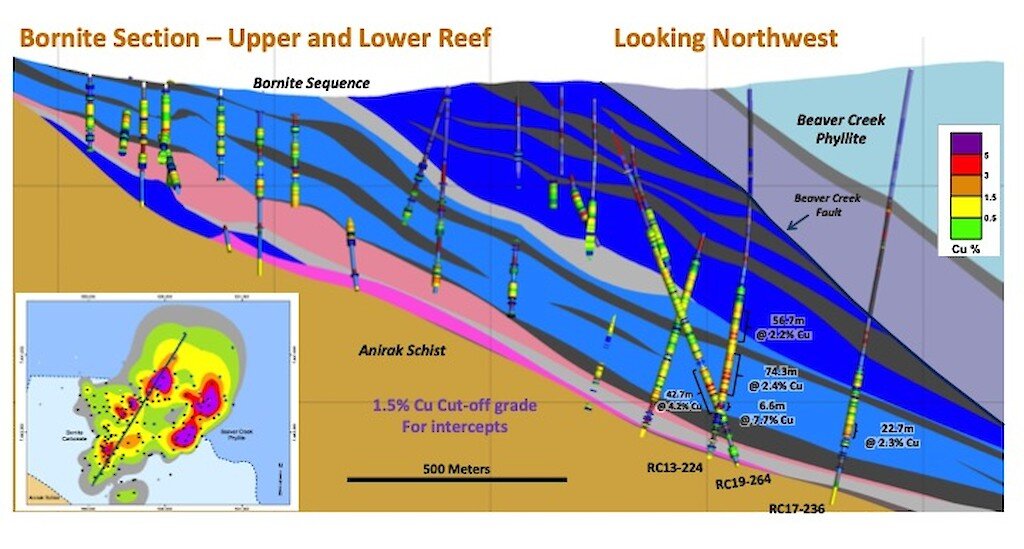
Bornite Deposit
The Bornite deposit is located in the Ambler Mining District on the southern flank of the Brooks Range, within the Northwest Arctic Borough of Alaska.
Accessed by air
Limited road access to the nearby village of Kobuk
No nearby power infrastructure
154 miles (250 kilometers) east of the town of Kotzebue, 13 miles (21 kilometers) by road north of the village of Kobuk, and 171 miles (275 kilometers) west of the Dalton Highway
Ambler Metals’ exploration camp is located at the Bornite deposit and supports seasonal exploration activities.
Utilizes some remaining infrastructure form Kennecott Exploration Company’s activities, 1950s through 1990s
Geology & Mineralization
Copper (+/- cobalt) sulfide mineralization at the Bornite deposit is hosted within the informally named Bornite carbonate sequence of latest Silurian to early Devonian age. The Bornite sequence consists of bedded and brecciated carbonate units interlayered with graphitic phyllite and argillite. Rock units of the Bornite sequence are less deformed and at a lower metamorphic grade than units of the Ambler sequence found immediately to the north. Widespread hydrothermal dolomitization is regionally ubiquitous throughout the Bornite sequence and locally hosts copper and cobalt mineralization.
The Bornite deposit has characteristics similar to copper-rich districts and deposits including the Mt Isa district in Australia, the Tynagh deposit in Ireland, the Kipushi deposit in the Congo, and the Tsumeb deposit in Namibia. All these deposits show syngenetic to early epigenetic characteristics; emplacement in carbonate stratigraphy; and, early pyrite-dolomite alteration followed by copper dominant sulfide mineralization. These deposits also occur in intra-continental to continental margin settings with extensional tectonics and bimodal volcanism. Basin-margin faults may play an important role in localizing mineralizing fluids.
Mineralization at the Bornite deposit is comprised of chalcopyrite, bornite, and chalcocite as stringers, veinlets, and breccia in-fill distributed in stacked, roughly stratiform zones exploiting favorable dolomitized carbonate stratigraphy. Tennantite/tetrahedrite occurs locally as isolated grains and veinlets. Stringer and massive pyrite and local sphalerite occur above and around the copper zones, while locally massive pyrite and sparse pyrrhotite occur in association with siderite alteration below and adjacent to copper mineralization. Cobalt occurs mostly as cobaltiferous pyrite within and enveloping the copper mineralized zones, and as carrolite and cobaltite generally within higher-grade copper zones.



